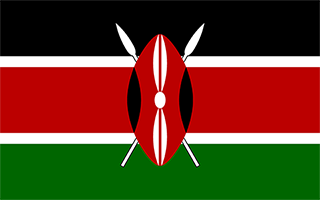Facts and Data
Webpages:
Official Unesco Page
Basis Data:
Unesco World heritage since: 2001
Size of heritage: 16 ha
- Buffer zone: 1,200 ha
Coordinates:
Longitude: 40,853°
Latitude: -1,716°
Summary
Lamu Old Town is the oldest and best-preserved Swahili settlement in East Africa, retaining its traditional functions. Built in coral stone and mangrove timber, the town is characterized by the simplicity of structural forms enriched by such features as inner courtyards, verandas, and elaborately carved wooden doors. Lamu has hosted major Muslim religious festivals since the 19th century, and has become a significant centre for the study of Islamic and Swahili cultures.
Location on Map
Show bigger map on Openstreetmap
Lamu Old Town: A Historic Gem in Kenya
Lamu Old Town, located in the Coast Province of Kenya, is a UNESCO World Heritage site that holds immense historical and cultural significance. This ancient town, situated on Lamu Island in the Lamu District, is a well-preserved example of Swahili architecture and culture, dating back to the 14th century.
History
Lamu Old Town has a rich and diverse history, shaped by various influences over the centuries. Established as a trading post by Arab and Persian merchants, it quickly became a prosperous center for trade between East Africa, the Arabian Peninsula, and India. The town flourished under the rule of the Sultanate of Oman in the 17th century, which brought further economic growth and cultural exchange.
During this period, Lamu Old Town became a melting pot of different cultures, resulting in a unique blend of Swahili, Arabic, Persian, and Indian influences. The town's architecture, characterized by intricately carved wooden doors, coral stone buildings, and narrow winding streets, reflects this cultural fusion.
Current State
Lamu Old Town remains remarkably well-preserved, offering visitors a glimpse into its vibrant past. The town's architecture, with its distinctive Swahili-Arabic style, is a testament to the skill and craftsmanship of the local artisans. The narrow streets, known as "sokos," are lined with traditional houses, mosques, and bustling markets, creating an enchanting atmosphere.
However, despite its historical significance, Lamu Old Town faces several challenges. The town's remote location and limited accessibility have hindered its economic development and preservation efforts. Additionally, the lack of proper infrastructure and maintenance has led to deterioration of some buildings.
Efforts are underway to address these challenges and ensure the long-term preservation of Lamu Old Town. The Lamu Conservation Trust, in collaboration with local communities and international organizations, is working towards sustainable development and heritage conservation. Initiatives include the restoration of historic buildings, training programs for local craftsmen, and the promotion of responsible tourism.
Lamu Old Town's inclusion on the UNESCO World Heritage list has also brought international attention and support. This recognition has helped raise awareness about the town's unique cultural heritage and the need for its preservation.
Visiting Lamu Old Town is like stepping back in time. The town's rich history, vibrant culture, and stunning architecture make it a must-visit destination for history enthusiasts and cultural explorers. Whether strolling through the narrow streets, admiring the intricately carved doors, or experiencing the local cuisine, Lamu Old Town offers a truly immersive experience.
In conclusion, Lamu Old Town is a treasure trove of history and culture, showcasing the unique blend of Swahili, Arabic, Persian, and Indian influences. Despite facing challenges, efforts are being made to preserve and protect this UNESCO World Heritage site for future generations to appreciate and enjoy.
